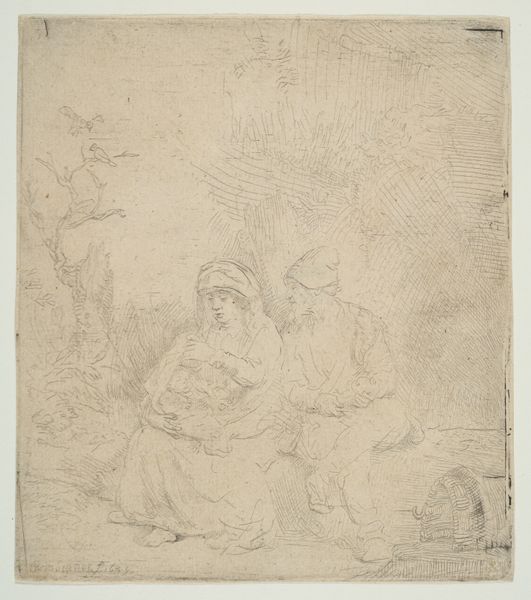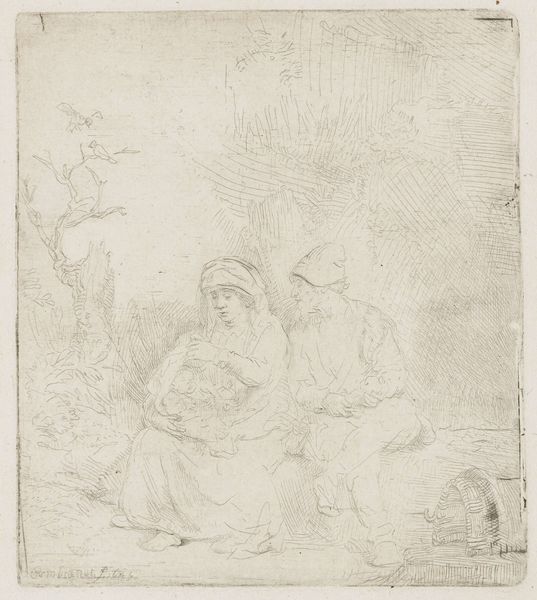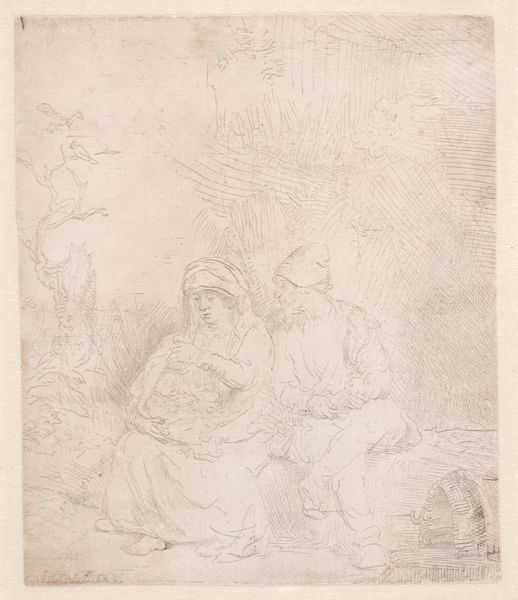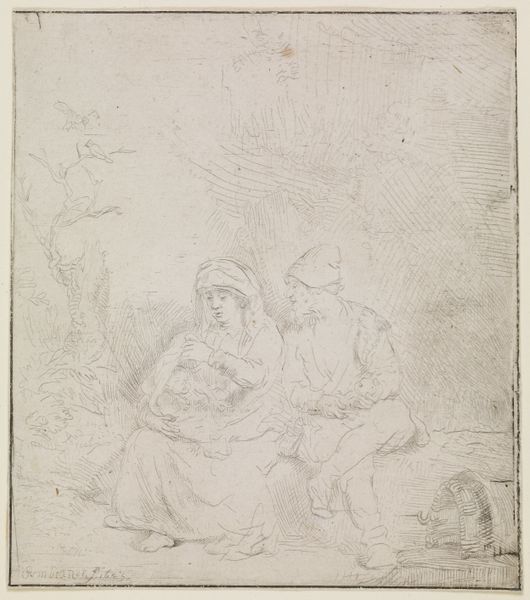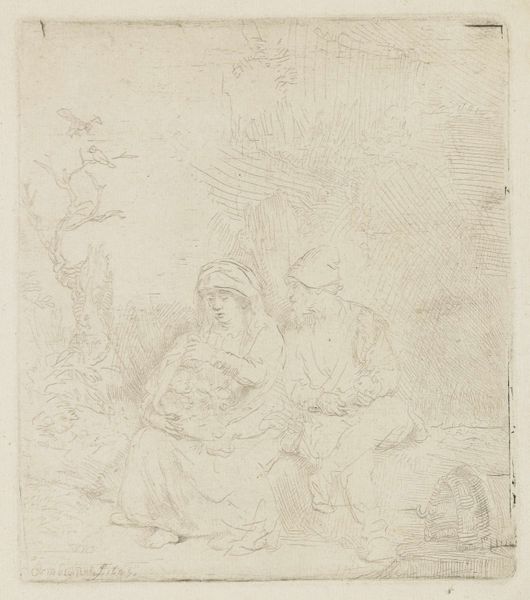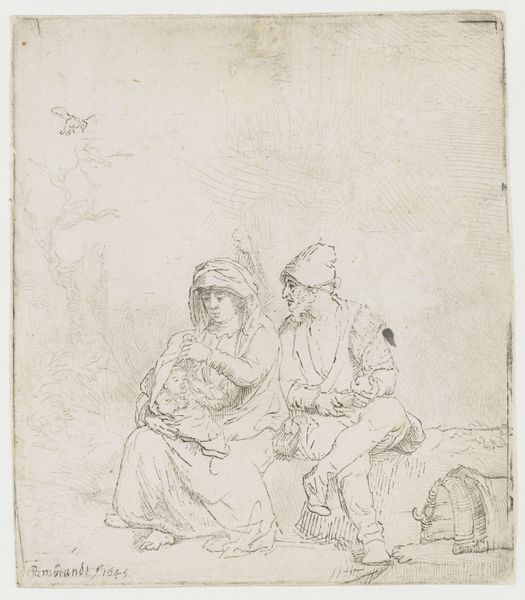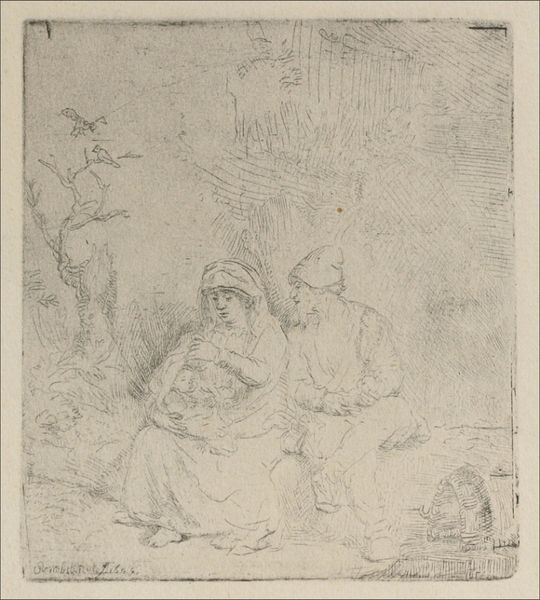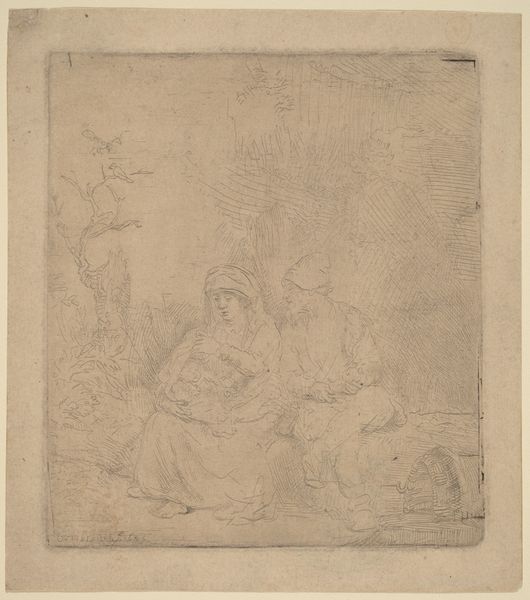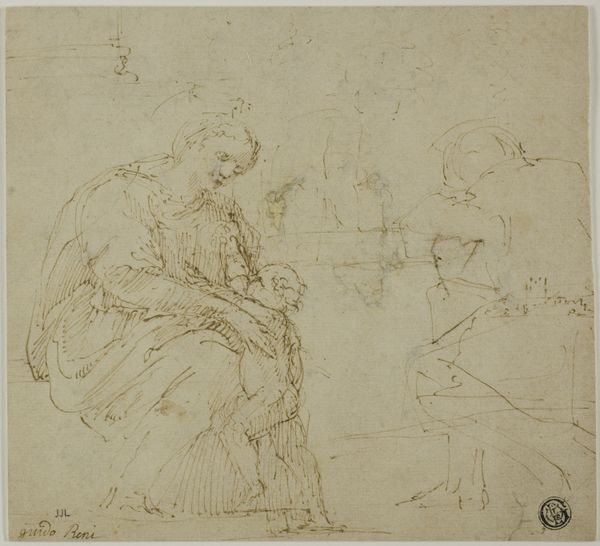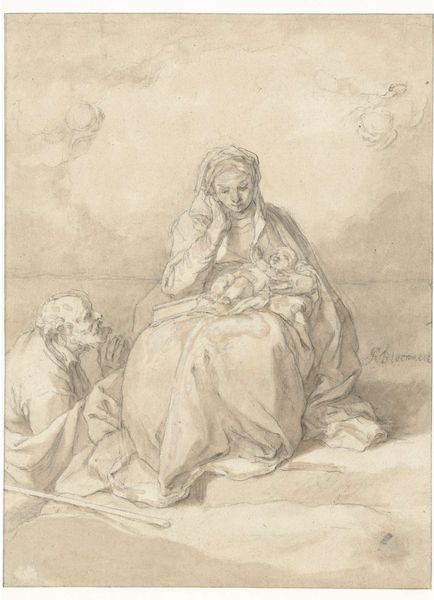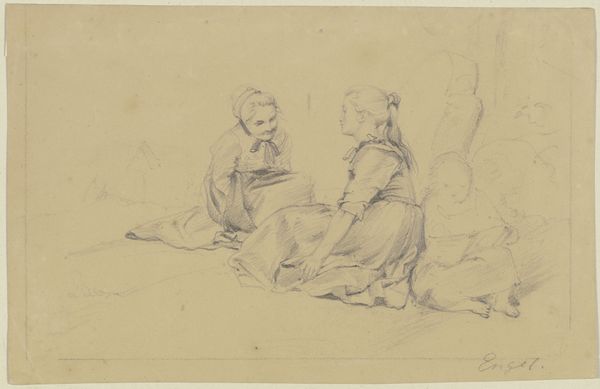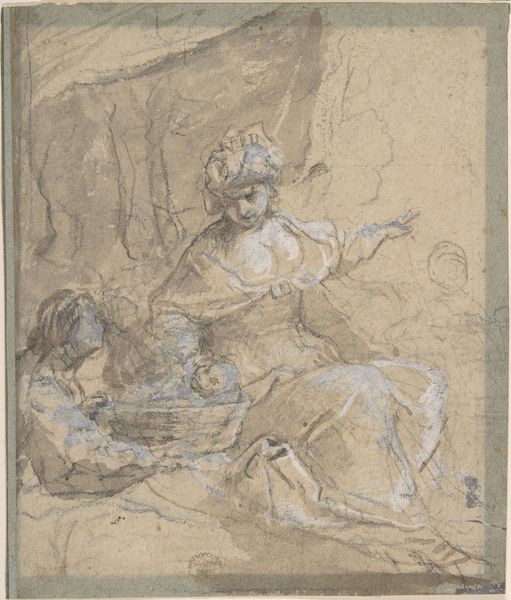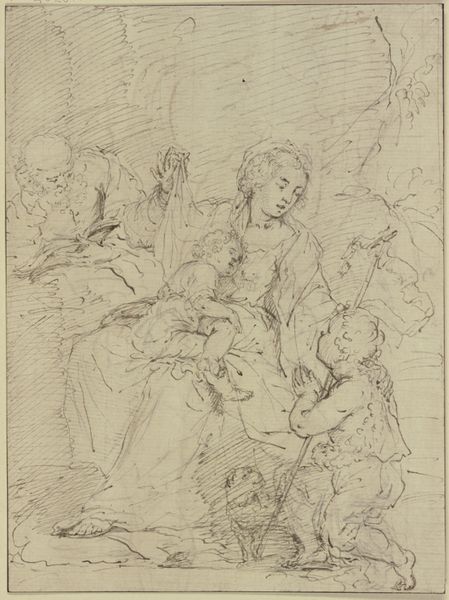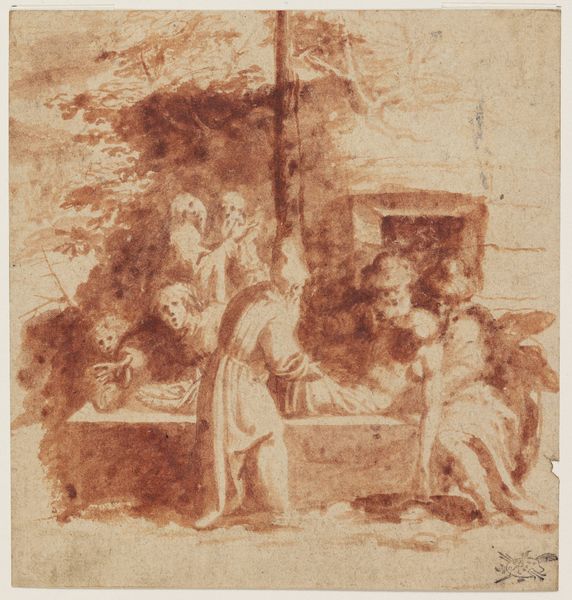
The Rest on the Flight into Egypt: Lightly Etched 1645
0:00
0:00
drawing, print, etching, paper, ink
#
drawing
#
narrative-art
#
baroque
#
dutch-golden-age
# print
#
etching
#
landscape
#
etching
#
figuration
#
paper
#
11_renaissance
#
ink
#
history-painting
Dimensions: 135 × 117 mm (image/sheet, cut within platemark)
Copyright: Public Domain
Editor: We're looking at "The Rest on the Flight into Egypt: Lightly Etched" by Rembrandt van Rijn, created in 1645. It's a delicate etching on paper. What strikes me is how simple yet intimate the scene feels, despite the historical weight of the subject matter. How do you interpret this work within its historical context? Curator: That intimacy is key. Rembrandt frequently subverted the expectations of history painting, bringing religious narratives down to earth. The 'Flight into Egypt' was a popular subject, often depicted grandly, but here, Rembrandt focuses on the human element. This etching exists not in isolation, but as part of a larger socio-political climate in the Dutch Golden Age, a time when religious tolerance was growing, and the middle class had disposable income to spend in the art market. The way he presents this scene - devoid of overtly religious symbols - resonates with the sensibilities of his buyers. Does that resonate with your understanding of the Dutch Golden Age? Editor: It does, the domesticity almost makes it seem secular. What's the significance of it being an etching? Was this choice simply practical, or something more? Curator: The etching medium allowed for wider distribution. While Rembrandt painted grand canvases for wealthy patrons and institutions, he could sell etchings like this one to a much broader audience. The relative ease and cost-effectiveness of etching allowed for a wider dissemination of his vision and these subjects within Dutch society, influencing perceptions of religion, family, and even the landscape itself. What do you make of the seemingly unfinished background? Editor: I had initially thought of it as incomplete, but hearing your points, maybe it serves to emphasize the everyday nature, the unmonumental aspects, of the figures in the foreground. Thanks, that's definitely given me a new perspective! Curator: And I hadn’t considered how stark that contrast is, between the background and foreground. The image seems much more about the politics of representation now.
Comments
No comments
Be the first to comment and join the conversation on the ultimate creative platform.
